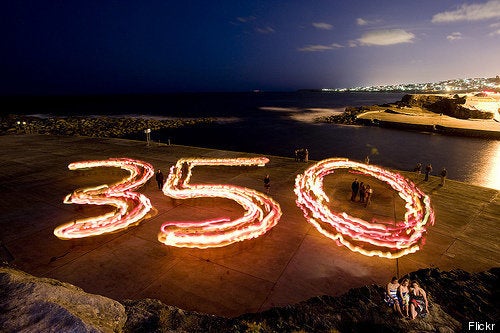
On the same streets in the Windy City where a young liberal Democratic activist named Francis Peabody peddled "smoke-free clean coal" in the 1890s, an estimated 400 Chicago residents marched to the infamous Fisk Generating Station coal-fired plant for the Chicago 350 Climate Action last week.
Eight activists were arrested for blockading Cermak Road, in front of the entrance to the coal-fired plant.
Here's a film clip from the action by the wonderful Topless America project in Chicago:
According to a 2006 Sierra Club report:
Each year in that white plume, the Fisk plant pumps out about 4,300 tons of sulfur dioxide and more than 2,300 tons of nitrogen oxides, both of which contribute to acid rain and can burn the inside of people's lungs. It also releases more than 117 tons of health-damaging particulate matter and more than 26 tons of volatile organic compounds...
In 2000, a team of researchers from Harvard University estimated that Fisk and the five other coal-fired plants, plus three more elsewhere in Illinois, together cause 300 deaths and 14,000 asthma attacks each year. If the plants were forced to abide by the Clean Air Act's pollution standards, the researchers found, two-thirds of those deaths and asthma attacks could be avoided.
The Chicago activists also called attention to the deadly life cycle of coal mining and coal burning -- including the burning of coal strip-mined from mountaintop removal operations in Appalachia. As the great Appalachian writer Harry Caudill wrote in his classic, Night Comes to the Cumberlands, "the rape of Appalachia got its practice in Illinois," where commercial strip-mining was first launched in the 1850s.
Today, strip-mining continues in southern and central Illinois, while devastating longwall mining has undermined thousands of acres of fertile farmland. For more information on longwalling in the heartland, visit Illinois Citizens Opposed to Longwall Mining.
For more information on closing the dirty coal-fired plants in Chicago, and their reliance on deadly coal mining, see How Green is Chicago.
Once the "world's largest coal market," Chicago has had a long history of peddling coal and coal-fired plants to the world. As Jeff Goodell pointed out in his book Big Coal: The Dirty Secret Behind America's Energy Future, after 22 million fair-goers at the Chicago World's Columbian Exposition in 1893 "got a glimpse of the futuristic all-dream electric Dream City, electricity became an instant icon. In cities across America, from Akron to San Francisco, local citizens banded together to bring electric lights to their Main Streets."
In 1892, however, the Chicago Daily Tribune already recognized the limits of coal. "How long can the earth sustain life," an editorial in the Chicago Daily Tribune asked, if we depend on the "wonderful power of coal?" The Chicago editorial lambasted Americans for our lack of vision and sense of energy conservation, and our need to "invent appliances to exhaust with over greater rapidity the hoard of coal." The article declared: "Doubtless the end of the coal, at least as an article of a mighty commerce, will arrive within a period brief in comparison with the ages of human existence. In the history of humanity, from first to last, the few centuries through which we are now passing will stand out prominently as the coal-burning period."
A century later, let's hope the end of the coal-burning period is not far away.
